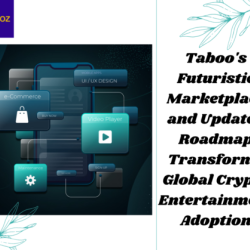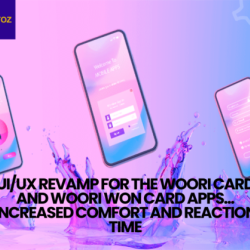Mobile apps have revolutionized the ways in which we connect, work, and amuse ourselves in today’s technologically advanced society. Every successful iOS app has been developed using a methodical, well-organized procedure. Each phase, from inspiration to deployment, is essential in forming the finished product.
In this thorough book, we’ll walk you through each of the six steps involved in creating an iOS app, including priceless advice and industry best practices to help you create a standout product that enthralls users.
Stage 1: Conceptualization and Ideation
Building the basis for your app idea is the main focus of the first stage of the iOS app development process. This is the moment to ponder and investigate diverse ideas, determining the fundamental goals and purposes of your software. Making your concept stand out from the crowd requires a thorough understanding of your target market and current market trends.
Conduct in-depth market research to evaluate your rivals and find market gaps that your app can address. Create a clear vision for your goals and the value proposition for your product.
Stage 2: Gathering and Planning Requirements
Once your app’s concept has been established, it’s time to compile specific requirements and develop a thorough plan. Outline the features, functionality, and technical requirements of your app in collaboration with stakeholders, such as designers, developers, and project managers.
To conceptualize the user interface and user experience of the app, create wireframes and prototypes. This process enables for early feedback and app modification while also helping to make the app’s flow and navigation more clear.
Stage 3: User Experience and Design
The design phase, which establishes the tone for the app’s aesthetic appeal and user experience, is a crucial step in the creation of iOS apps. Work together with skilled UI/UX designers to develop a user-friendly and visually appealing design that complements your business identity.
Put your efforts into designing an intuitive user experience with a user-friendly UI. Make an effort to give users a satisfying and captivating experience so they’ll keep coming back.
Stage 4: Coding and Development
As the coding process gets underway, the development stage brings your software to life. Work together with knowledgeable iOS app developers to turn the approved design into a usable app. Think about the method of development, such as cross-platform development with frameworks like React Native or Flutter or native iOS programming using Swift.
Stage 5 Testing and quality assurance comprise
Your app must undergo extensive testing and quality assurance to be sure it is reliable, secure, and error-free. Test everything thoroughly, including performance, compatibility, usability, and functional aspects.
Real-world beta testing can yield insightful feedback for future enhancements. To give your users an error-free software, swiftly address any problems found during testing.
Stage 6: Installation and Upkeep
You can now launch your iOS app, congratulations! Utilizing their specifications, submit your app to the Apple App Store. The discoverability and visibility of apps can be improved through app store optimization.
Following deployment, keep an eye on the app’s functionality and collect user feedback to inform any upcoming upgrades and enhancements. In a competitive market, regular upkeep and upgrades are necessary to keep your software effective and relevant.
The creation of an iOS app involves innovation, teamwork, and creativity. You can create an iOS app that stands out in the crowded app market and appeals to your target audience by using these six steps and best practices.
Keep in mind that each stage necessitates a customer-centric attitude and great attention to detail. As you hone your app to fit the changing needs of your users, welcome feedback and modification.
Remember that success in iOS app development comes from providing an experience that consumers adore and appreciate as you set out on your development journey. You may unleash the potential of your app and make a significant influence on the digital world if you work hard, are passionate about what you do, and have an innovative mentality.
As we come to the end of our journey through the six stages of the iOS app development process, it is clear that creating an engaging and profitable app demands careful preparation, original thinking, and a dedication to perfection. Each
The creation of an iOS app involves a combination of art, science, and creativity in addition to being purely technical. In order to create a seamless and interesting user experience, it is necessary to comprehend the demands and preferences of your target audience. It’s about pushing the envelope of what’s feasible and providing consumers with an app that makes a lasting impression.
Your app’s foundation is laid at the ideation and conceptualization stage when you specify its goals. At this point, inspiration strikes, and your vision begins to take shape. It is the ideal chance to question the status quo, think creatively, and develop a notion that distinguishes out from the competition.
The creation of iOS apps is centered on design and user experience. The user interface of your software serves as a blank canvas for creativity at this point, where its visual identity comes to life. You create an experience that people find simple, elegant, and pleasurable by aiming for these qualities.
The technical foundation of your app is development and coding, where talented developers translate your design and ideas into reality. In order to make sure that your software is not only functional but also scalable and effective, choosing the proper development style and following best practices are crucial.
Collaboration, communication, and adaptation are essential throughout the whole iOS app development process. Accept input from your development team, stakeholders, and users. To guarantee that your app develops and expands along with your audience, be open to making changes and upgrades.
The road to perfection is not linear given how quickly technology and consumer preferences are evolving. It is a never-ending process of innovation, education, and development. Remember that your work as an app developer is never fully finished as you see how your app affects the lives of users after it is released.
The six steps of the iOS app development process are more than simply a road map; they stand for a commitment to producing something special and a search for perfection. Accept the difficulties, rejoice in your accomplishments, and keep pushing the limits of what is conceivable in the field of app development.
The road to perfection is a never-ending one, and the lessons learned while creating one app will serve as the basis for the next. You have the chance to influence iOS app development’s future and make a mark on the digital environment as technology develops and consumer expectations change.
So, bear in mind the lessons learnt along this road to perfection as you start working on your next iOS app development project. Be innovative, thorough, and committed to creating an app that not only meets, but also surpasses the expectations of your consumers.
May this book operate as a compass for your future undertakings, pointing you in the direction of developing amazing iOS apps that have a positive impact on millions of people’s lives worldwide. Take the initial step on the road to perfection, and the opportunities are endless.

















